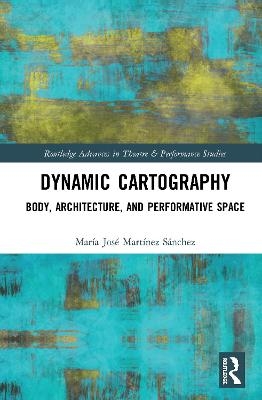
Dynamic Cartography
Routledge (Verlag)
978-0-367-26620-2 (ISBN)
Dynamic Cartography analyses the works of Rudolf Laban, Lawrence Halprin, Anne Bogart, Adolphe Appia, Cedric Price, Joan Littlewood, and Hélio Oiticica. They are practitioners who have worked on different areas of enquiry from the existing relations between body and space through movement, events, or actions but whose work has never been presented from this perspective or in this context. The work and methodologies set up by these practitioners enable us to develop a practice-based exploration. Some of the experiments in the book – Micro-actions I and II – explore the presence of the body in the space. In Kinetography I and II, Laban’s dance notation system – kinetography – is used to create these dynamic cartographies. Kinetography III proposes the analysis of an urban public space through the transcription of the body movement contained on it. The series Dynamic Cartographies I, II, and III analyses movement in geometrically controlled spaces through the Viewpoints techniques by Anne Bogart. Finally, Wooosh! and Trellick Tales present two projects in which performance is applied in order to analyse and understand urban and architectural space.
María José Martínez Sánchez is a lecturer the Birmingham School of Architecture and Design (BCU), UK, and a researcher at the Centre for Interdisciplinary Performing Arts at the Royal Birmingham Conservatoire, UK. Her work has been published in international journals and presented at the Dance Biennale of Venice, the Biennale of Architecture in Venice, the Spanish National Theatre (CDN), and the Prague Quadrennial of Scenography.
Contents
List of illustrations
Acknowledgements
Introduction
Chapter 1: Body and the surrounding space: scoring body movement
Introduction: spatial body rituals
The representation of movement
Rudolf Laban: Kinetography as a spatial scoring system
Scores: the representation of processes
Scoring: mapping spatial processes
Experiments
Kinetography I: movement notation for one body
Kinetography II: movement scores on stage
Kinetography III: movement scores in complex environments
From surrounding space to geometry
Chapter 2: Body and Geometry: Contemporary Rituals
Introduction: performativity and ritual
Body, space, and geometry
The Laboratory of Movement Study – L.E.M. (Le Laboratoire d’Estude du Mouvement)
Viewpoints: a spatial composition tool
Experiments
Dynamic Cartography I, II, and III
From geometry to the scenic space
Chapter 3: Body and Scenic Space: Ritual Spaces
Introduction: the origins of space
Reflections on space
The Work of Living Art: radical proposals for the mise- en- scène of Wagnerian drama
The body in the theatrical space: the Greek theatre
Atmospheres
Experiments
Micro-actions in Greece
Strings, Old Vinegar Factory (2015, Limassol, Cyprus)
From scenic space to architectural programme
Chapter 4: Body and Architecture: Spatial Dramaturgies
Introduction: the architectural script
Once upon a time, a laboratory of fun
Event and situation
The art of action
Performative architecture
Breaking the architectural fourth wall
Experiments
Wooosh! (Winchester, 2016)
From programme to landscape
Chapter 5: Body and Landscape: Performativity and Social Space
Introduction: urban anthropophagy
The representation of landscape
Corpografias (corpographies) and corpocidade (corpocity)
The body as a means of artistic expression
Environmental art and Thirdspace
ExperimentTrellick Tales: the Thirdspace of Trellick Tower
From landscape to the surrounding space
Conclusions: towards the creation of a dynamic cartography – an interdisciplinary methodology
| Erscheinungsdatum | 30.07.2020 |
|---|---|
| Reihe/Serie | Routledge Advances in Theatre & Performance Studies |
| Zusatzinfo | 7 Line drawings, black and white; 17 Halftones, black and white; 24 Illustrations, black and white |
| Verlagsort | London |
| Sprache | englisch |
| Maße | 156 x 234 mm |
| Gewicht | 453 g |
| Themenwelt | Kunst / Musik / Theater ► Kunstgeschichte / Kunststile |
| Kunst / Musik / Theater ► Theater / Ballett | |
| Technik ► Architektur | |
| ISBN-10 | 0-367-26620-2 / 0367266202 |
| ISBN-13 | 978-0-367-26620-2 / 9780367266202 |
| Zustand | Neuware |
| Informationen gemäß Produktsicherheitsverordnung (GPSR) | |
| Haben Sie eine Frage zum Produkt? |
aus dem Bereich


